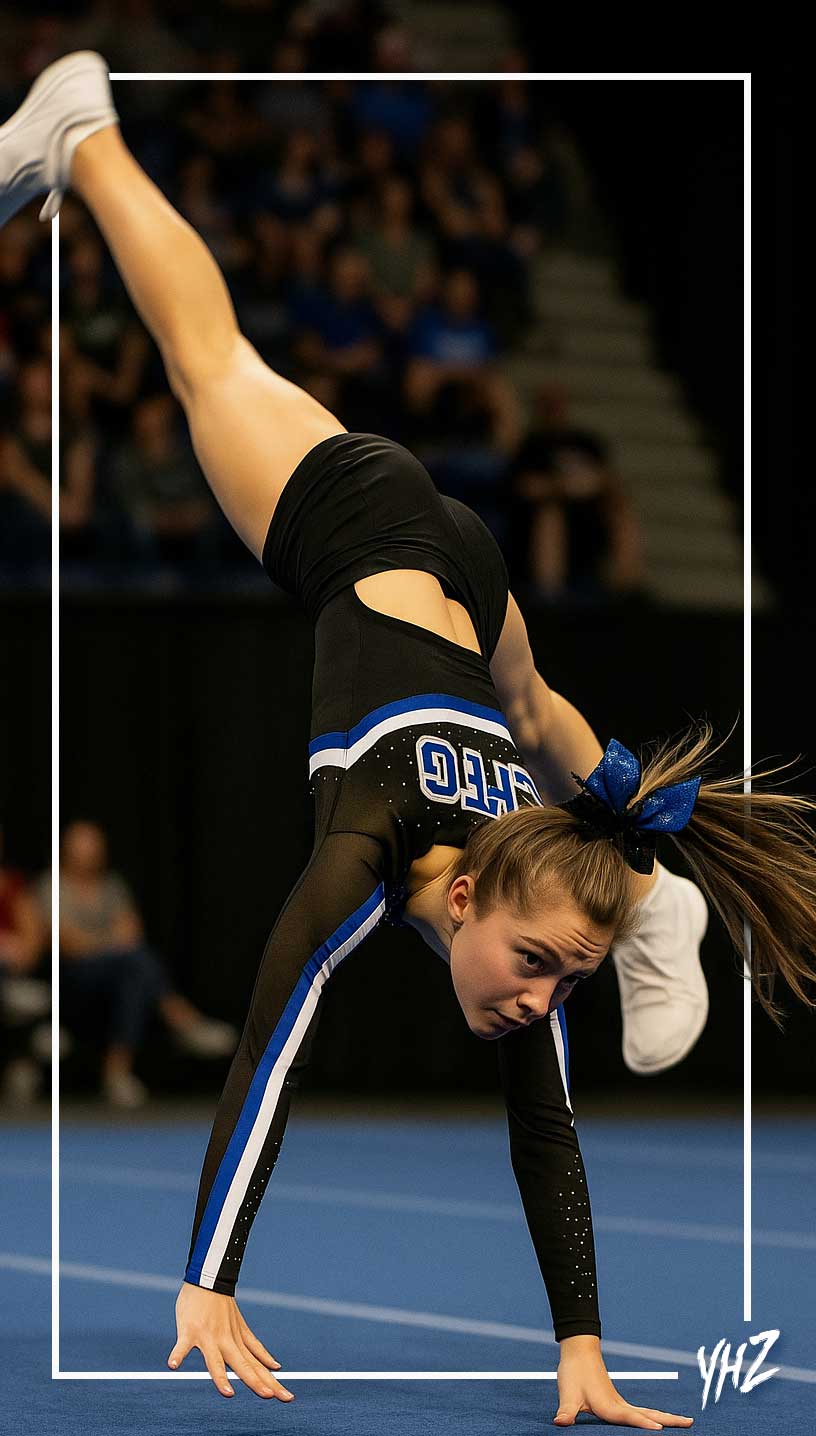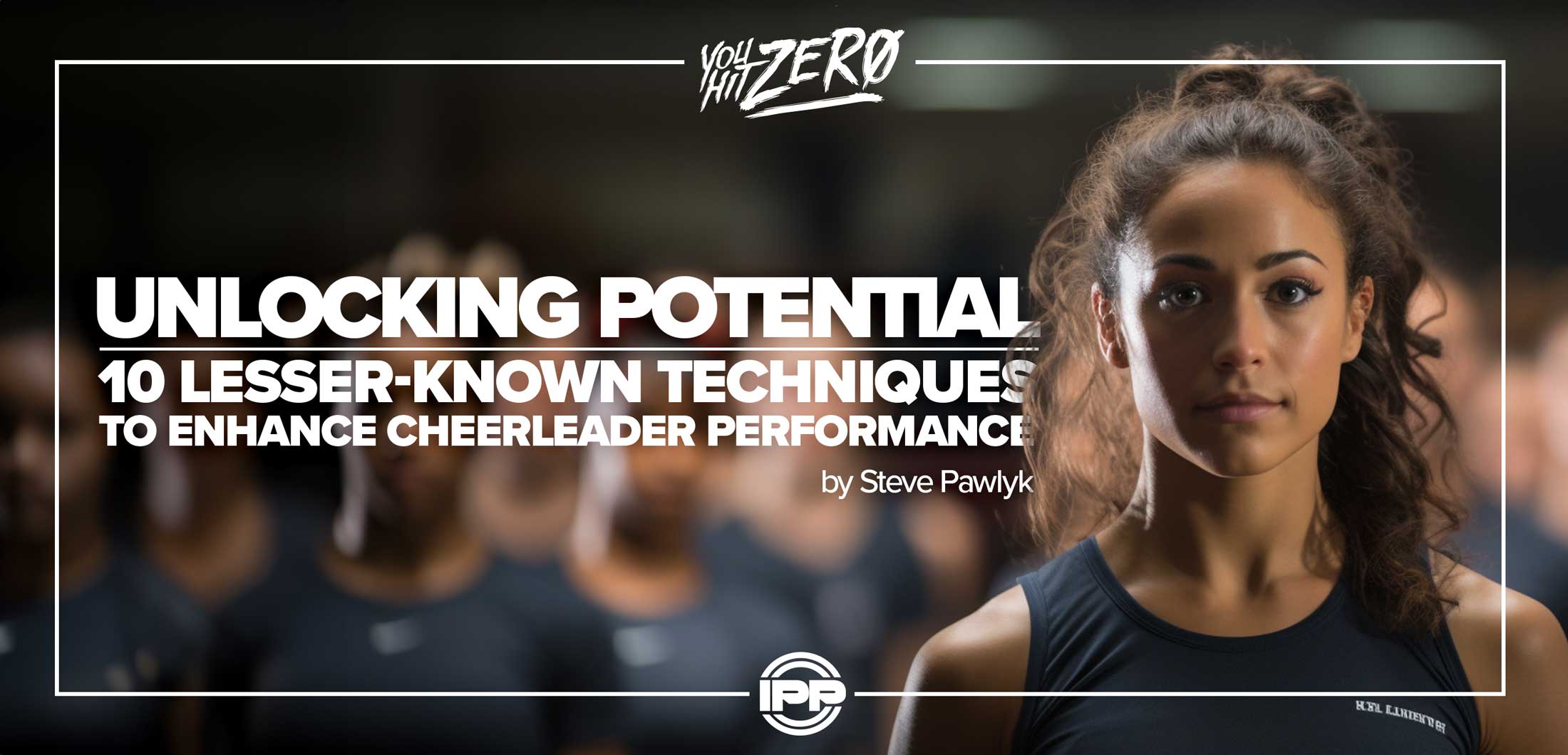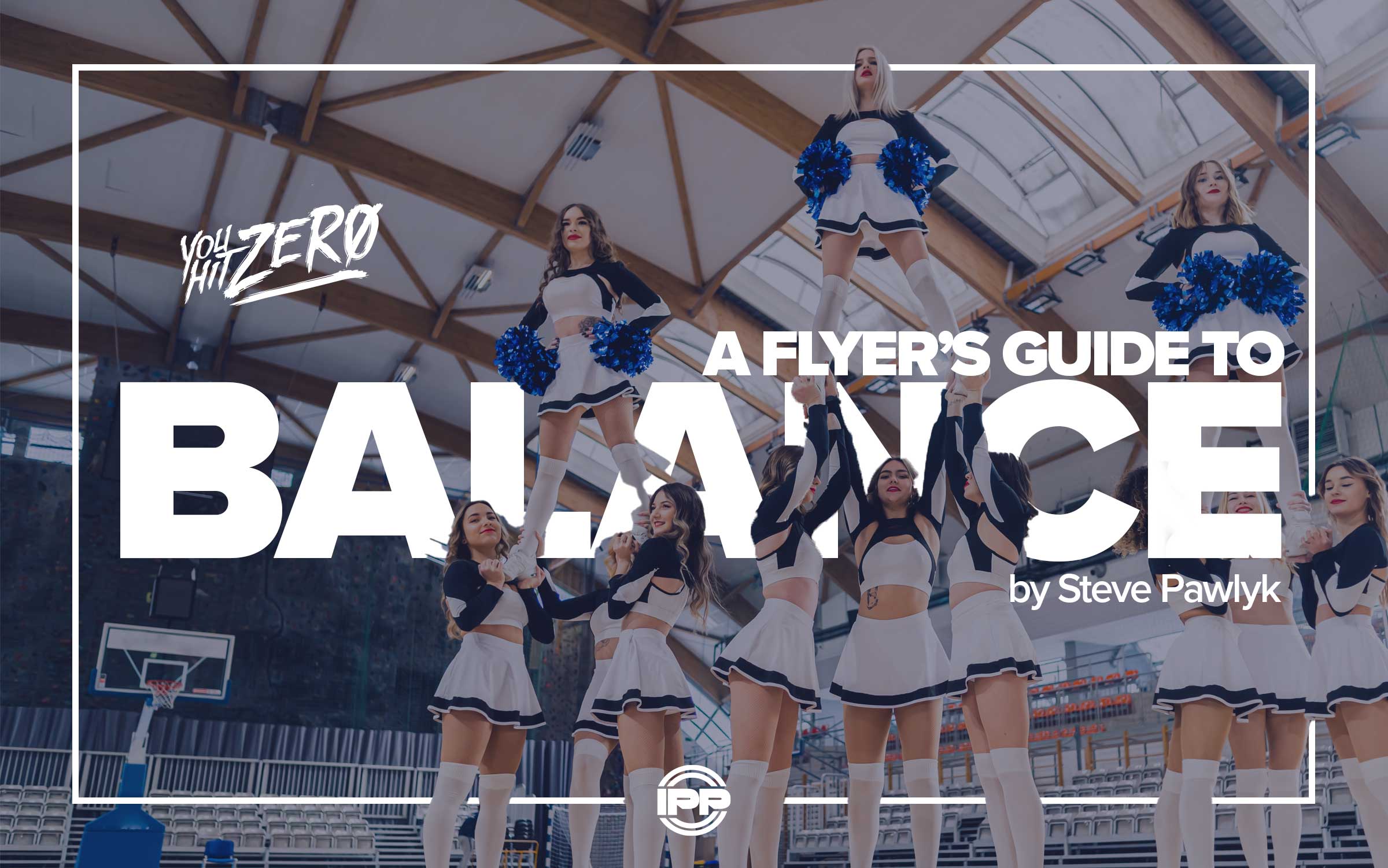By Steve Pawlyk
Published September 12, 2023
Cheerleading is a sport that demands not just energy and enthusiasm but also a high level of precision and skill. As a coach, your role is pivotal in ensuring that your athletes are well-equipped to excel. One of the critical skills that often gets overlooked is spotting. In this comprehensive guide, we’ll delve into the various facets of spotting, from drills and video analysis to essential safety tips. Let’s dive in!
1. Spotting Drills: Building Strength and Trust
What It Is:
Spotting drills serve as the cornerstone for developing the strength, skills, and confidence required for effective spotting. These exercises can be tailored to meet the specific needs of any athlete or squad.
Detailed Example:
Partner drills are excellent for fostering trust between athletes and enhancing their spotting techniques. During these drills, athletes should stand close to the flyer and bend at the knees. They should place their arm around the flyer’s mid-section, ensuring shoulder contact. This helps in mastering various positions, such as jumps or intricate stunts.
2. Video Analysis: A Tool for Precision
What It Is:
Video analysis is an invaluable resource for dissecting and refining a routine. It helps identify areas needing additional spotting assistance and highlights what is already being done correctly.
Detailed Example:
Recording your routine and reviewing it in slow motion allows you to scrutinize whether athletes are effectively spotting each other. It’s crucial to watch the flyer closely and call out stunts audibly enough for everyone to hear.
3. Visualization Techniques: The Power of the Mind
What It Is:
Visualization is a potent tool that can help athletes internalize how to spot each other correctly by imagining themselves executing the moves flawlessly.
Detailed Example:
Encourage your athletes to sit comfortably and visualize themselves performing the stunts. They should focus on details like proper arm and leg positions and imagine the spotter assisting them in landing safely.
4. Spotting Apps: Technology to the Rescue
What It Is:
Spotting apps offer a convenient way for athletes to hone their spotting skills during their personal time. These apps allow you to record your athletes and then view an analysis of accuracy, time, and progression.
Detailed Example:
Skill Shark is an excellent app that includes a range of resources for improving spotting skills. It’s perfect for coaches who want to practice hands-on spotting and get a granular analysis of their progression while learning a new skill.
5. Spotting Harness: Safety First
What It Is:
Spotting harnesses are invaluable for practicing advanced stunts safely. They eliminate the fear of injury, allowing athletes to focus solely on improving their skills.
Detailed Example:
Spotting harnesses come with adjustable straps and padding, ensuring a secure and comfortable fit. They’re ideal for practicing catching the flyer’s head and neck first if they fall and catching them at the highest point possible to slow their descent.
Spotting is an essential skill for any cheerleading team, and mastering it requires dedication and practice. With the right tools, techniques, and resources, you can help your athletes improve their skills and safely achieve their goals.
IPP's Premade Mixes are USA Cheer Compliant and customizable! Add Sound FX, swap songs, & more! Add your Team Name to the mix for only $10!






















